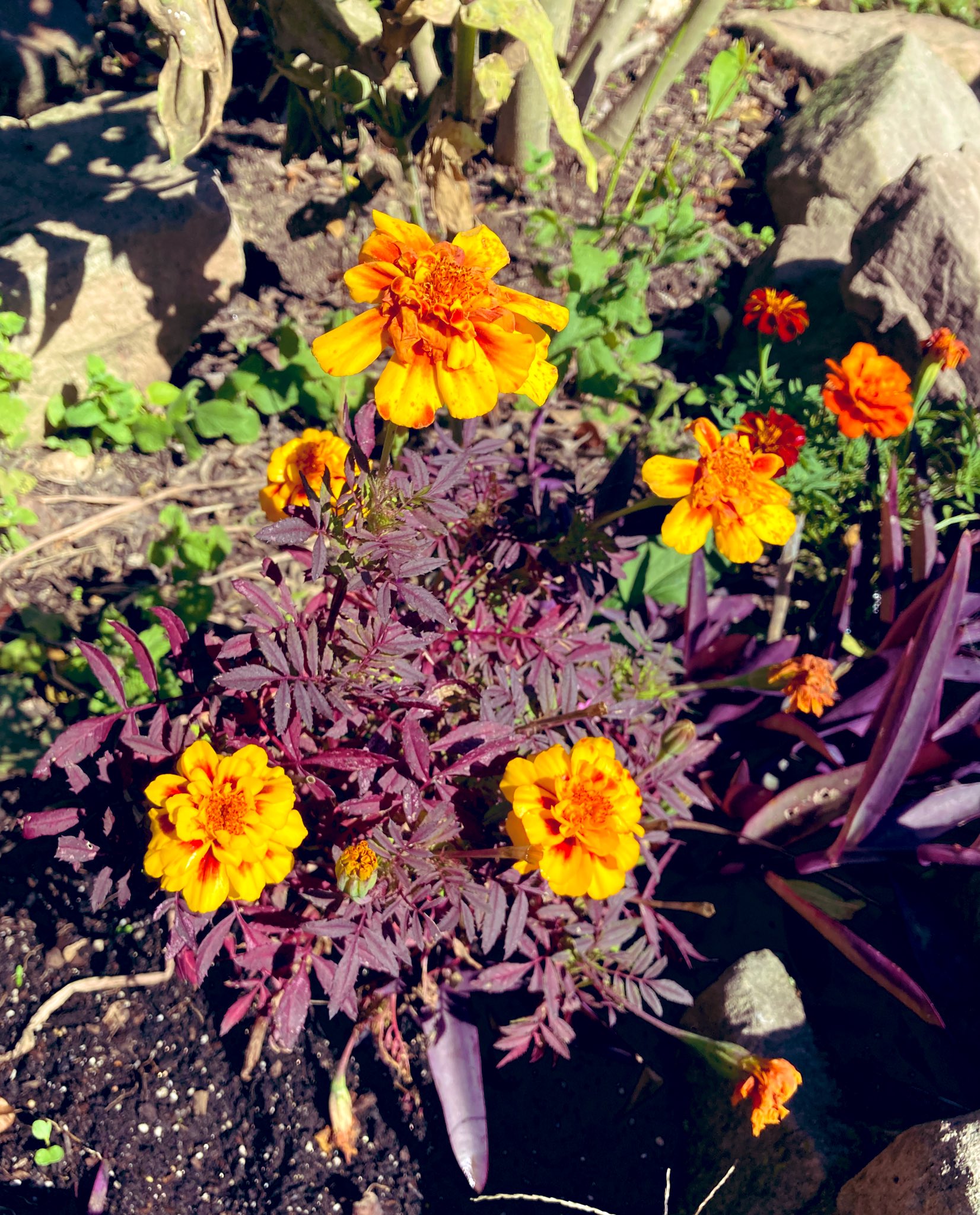Seeing changing colors on plants’ leaves can be a worrying sign, especially Marigold leaves turning red or other colors!
Do you wish to avoid seeing your Marigold leaves turning nasty colors? Well, continue reading to find their solutions.
Table of Contents Show
Why Is My Marigold Leaves Turning Red?
Marigold (Tagetes spp.) is probably the most popular flowering plant that grows well in any sun garden and is very easy to care for.
In any case, you can assume that your plant is likely suffering, and you should find out the problem to treat it sooner.

However, growing tropical flowers from Mexico and South America may not be easy, considering they require an appropriate environment.
Here are a few probable reasons why Marigold leaves would start turning red or purplish.
1. Phosphorus deficiency
One of the leading causes of purplish leaves on Marigold is phosphorous deficiency.
Although Marigolds require all nutrients, they are picky about phosphorus, which helps stem and flower development.
Missing out on fertilizing, severely low pH levels, and sometimes stressed roots may cause plants to fail in absorbing phosphorus.
The Marigold leaves will develop purple tingles in patches and then proceed to curl.
Another tell-tale sign of lack of phosphorus is late or no flowering.
Solutions
- Apply a balanced fertilizer with higher phosphorus content, such as Jack’s Blossom Booster every 2-4 weeks.
- Follow the recommended application rate by diluting the solution to half-strength to avoid root burns.
- If the leaves fail to revive, consider checking the soil pH level for a problem.
2. Cold Stress
Marigolds suffering from cold stress and low-night temperatures will fail to regulate necessary nutrients.
Exposure to cold temperatures, especially at night or in cold regions (Below USDA 8), will affect the plant’s digestion process.
As a result, the nutrient-deprived leaves will change color to usually yellowish or purplish hue.
Beware because your Marigold will fail to flower in time or even die from cold setbacks.
Solutions
- Marigolds do well in full sun, and temperatures range between 60-70°F, whereas the variety like African Marigolds does best between 68 and 100°F.
- Move your plant to an open garden or area with at least 6-8 hours of sunlight.
- Grow them in pots and move them indoors when the temperature drops below 55°F.
3. pH imbalance
Also improper pH level in the soil can affect nutrient availability to the plant, potentially causing leaf discoloration.
Although they prefer slightly acidic soil, Marigolds may suffer when it gets too acidic or below the pH level of 5.5.

Low-pH soil can also cause iron and manganese poisoning, causing leaf discoloration such as bronzing.
Solutions
- Test the soil pH and adjust it to the appropriate range for Marigolds, generally around 5.8 to 6.2.
- Amend the soil with dolomite lime or wood ash to raise pH.
- Add sulfur to the soil to lower or neutralize the pH if the soil amendment process goes out of hand.
4. Diseases and Pests
Diseases or pests can sometimes stress Marigold plants and lead to purplish or reddish leaves.
Powdery mildew and white mold formation are two primary diseases that may cause leaf discoloration in Marigold leaves.
- White mold: Plants affected by Sclerotinia fungus may witness white mold infection with a black formation.
- Powdery Mildew: This is a fungal disease that shows up in leaves as a white layer and then turns color to purple.
Solutions
- Remove affected leaves and dispose of them to prevent further infection.
- Apply copper-based fungicide repeatedly for a few weeks until the problem subsides.
- Alternatively, make a home-based solution of one tsp baking soda with an equal amount of water and apply to the affected parts.
5. Genetic Factors
Although rare, some Marigold cultivars may naturally display purplish or bronze-colored leaves as part of their genetic makeup.
You are more likely to get variegated Marigold leaves if you plant a variety known for this leaf coloration.
There is no solution to it, nor is there any need for concern.
Should I Remove the Affected Leaves?
Do not worry about removing affected Marigold leaves if you believe the damage is extensive or less likely to be unpreventable.
While trimming, use a sterilized pruning shear or scissors to cut the leaves at the connecting to the stem.
Remove dead, decayed, and excessively yellowed or browned leaves to encourage a healthy-looking plant.
Do not remove more than one-third of the plant leaves at once, as it will affect photosynthesis.
From Editorial Team
Conclusion!
Always choose a sunny spot to grow your Marigolds, as these flowers fail to bloom in partial or complete shade.
Moreover, deadhead spent flowers regularly; apply a balanced fertilizer and water once a week (depending on the light and temperature) to keep it healthy!
If your area is prone to low temperatures, consider growing Marigold in pots and moving them indoors when needed.


